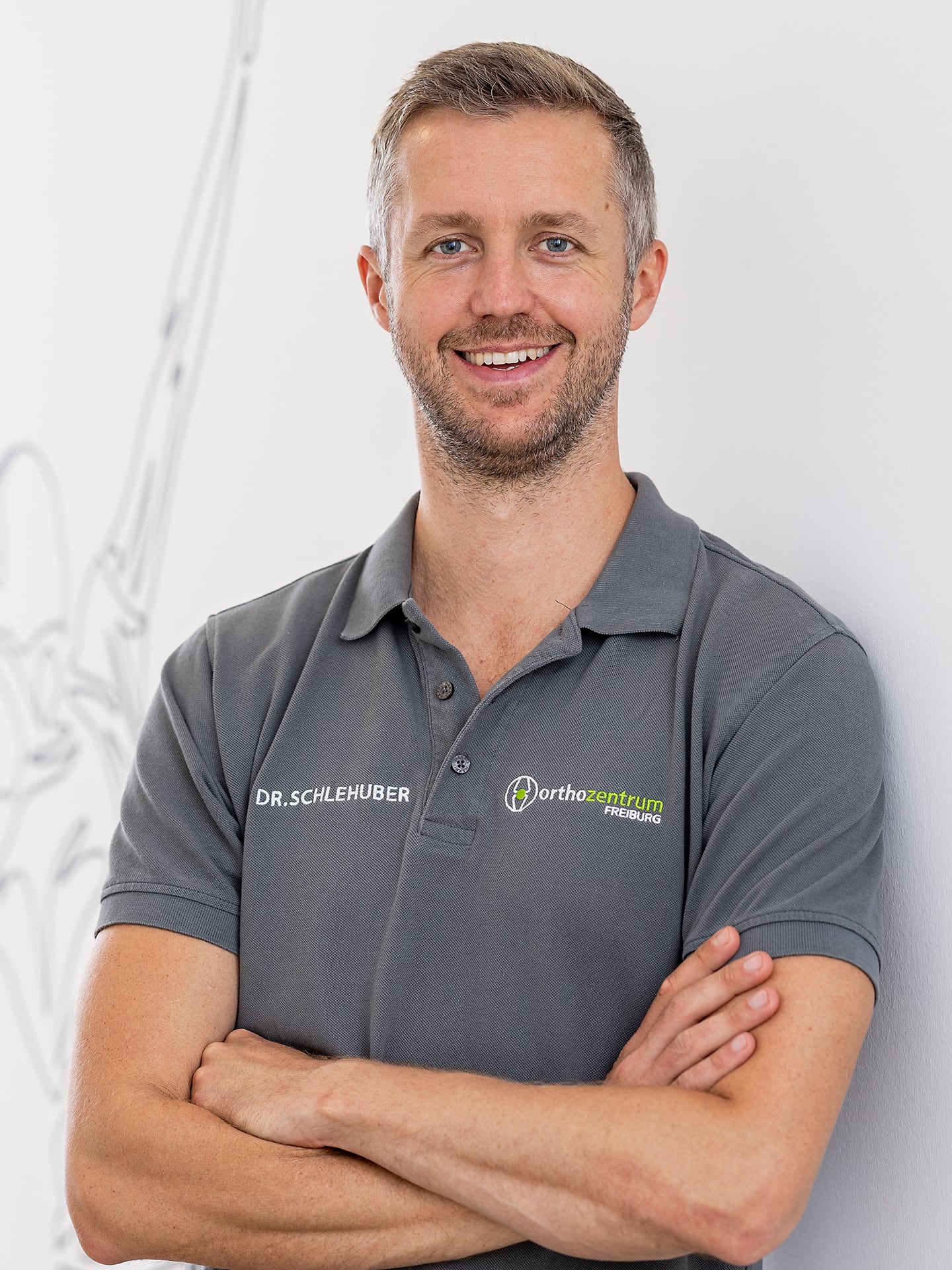Anatomy & Function
Runner's knee, also known as tractus iliotibialis syndrome, or ITBS, refers to an overuse syndrome that is most common in running sports. However, the condition can also occur in other sports that involve intense running or jumping, such as handball or soccer. Around 15 percent of male and female athletes are affected by this condition.
The tractus iliotibialis is a flat connective tissue structure on the outer side of the thigh that extends from the hip to the outer tibial plateau and stabilizes the knee joint. Rubbing of the tractus iliotibialis on the outer knee joint can cause irritation and consequent pain on the outside of the knee. New study results see a pinching of the connective tissue lying under the tractus as the cause.
Klicken Sie auf den unteren Button, um den Inhalt von Spotify zu laden.
Symptoms & Complaints
Signs of runner's knee may include:
- Sharp pain on the outside of the knee after exertion
The most common symptoms of runner's knee include stabbing pain on the outside of the knee, which initially occurs only after and in the course already during intense exercise. The pain can radiate into both the upper and lower leg. Due to the discomfort, the running distance is shortened over time and the training often has to be stopped early. In addition, pain at rest may occur. The occurrence of the complaints is possible both unilaterally and bilaterally.
Causes
The overriding causes of runner's knee are overloading and incorrect loading in the hip and knee joints, which lead to increased traction on the tractus iliotibialis. As a result, there is irritation of the tractus iliotibialis on the outside of the knee joint and the typical symptoms of runner's knee.
Causes of overloads and misloads include:
- Wrong footwear
- Unfavorable running technique
- Malalignment of the legs (knock knees or bow legs)
- Foot malpositions
- Muscular imbalances
Improper running shoes or incorrect running technique can lead to incorrect stress on the hip and knee joints. Furthermore, axial misalignments of the legs, especially bow legs, lead to increased tension of the tractus iliotibialis, which promotes irritation and possibly inflammation. Unilaterally weakened or shortened hip muscles can also lead to increased tension on the tractus iliotibialis.
Diagnosis
Our certified sports physician Dr. med. Tarek Schlehuber will interview you in detail regarding your complaints, including duration and severity. A physical examination will then take place, during which the hip and knee joints and surrounding musculature will be thoroughly examined. Typically, runner's knee is characterized by a pressure pain on the outer side of the affected knee. The so-called compression test according to Noble specifically indicates the presence of runner's knee: In this test, the person to be treated lies with his/her back on the examination couch. The examiner bends the knee joint at a 90-degree angle with one hand and applies pressure to the outside of the knee with the other hand. The leg is now slowly stretched passively. Typically, pain occurs at an angle of 30 degrees.
In addition, special functional tests are performed to rule out other diseases of the knee joint. As a rule, the medical history and physical examination are sufficient to diagnose runner's knee. If this is not the case, an ultrasound examination can further confirm the diagnosis.
As part of the cause clarification, the gait pattern should be analyzed, among other things, in order to identify existing muscular imbalances and correct them if necessary. Furthermore, legs and feet should be examined for malpositions.
If the existence of other diseases is suspected, for example an injury to the outer meniscus in the knee joint or an outer ligament injury, imaging procedures such as an MRI examination are used for further clarification.
Treatment
The treatment of runner's knee consists largely of conservative therapeutic measures. Surgeries are only necessary and sensible if the existing complaints are based on another cause. Our goal is for athletes to be able to return to their original load intensity and achieve freedom from pain.
Conservative therapy:
The following conservative therapies are available:
- Protection
- Cooling pads
- Painkiller
- Physiotherapy
- Optimization of the running technique
- Foot suitable footwear
- Correction of malpositions
- Shock wave therapy
- Infiltration therapy
One of the most important pillars of therapy for acute runner's knee is rest and relief of the knee joints. First of all, a break from sports should be taken to reduce irritation of the tractus iliotibialis. In addition, cooling pads can be applied to the painful area. Care should be taken not to place the cooling pad directly on the skin, but to wrap it with a kitchen towel or similar. If the pain is severe, painkillers from the group of non-steroidal anti-inflammatory drugs (NSAIDs) can be taken for a short time.
In the long term, stretching and strengthening of the surrounding hip and thigh muscles should be aimed for as part of physiotherapy. The exercises taught there should be performed regularly at home. After the pain has subsided, the load and the training volume can be gradually increased. In addition to optimizing the running technique, attention should be paid to the selection of suitable footwear. In addition, malpositions of the legs and/or feet should be corrected to prevent a recurrence of runner's knee.
In rare cases, there is no improvement despite the above measures, so the injection of anti-inflammatory drugs or the use of shock wave therapy may be considered.
FAQs

